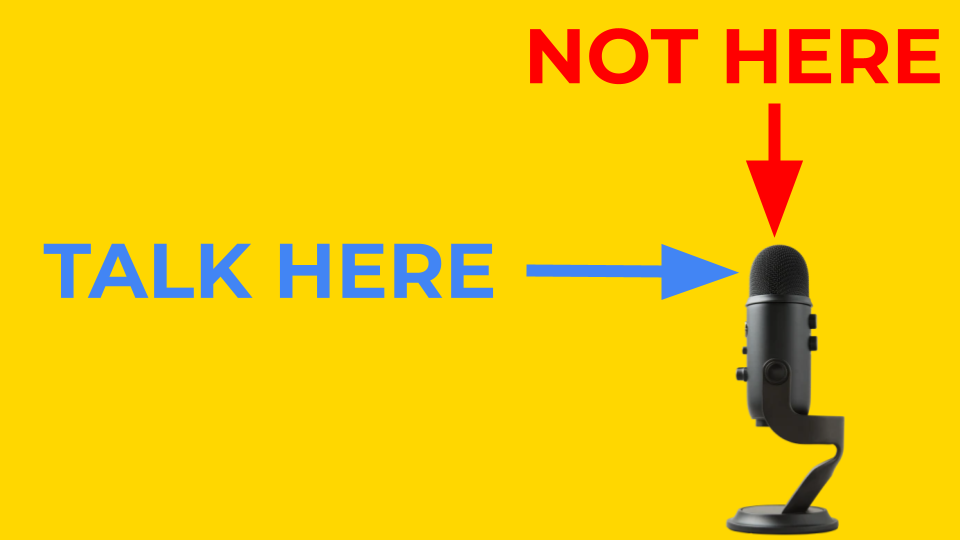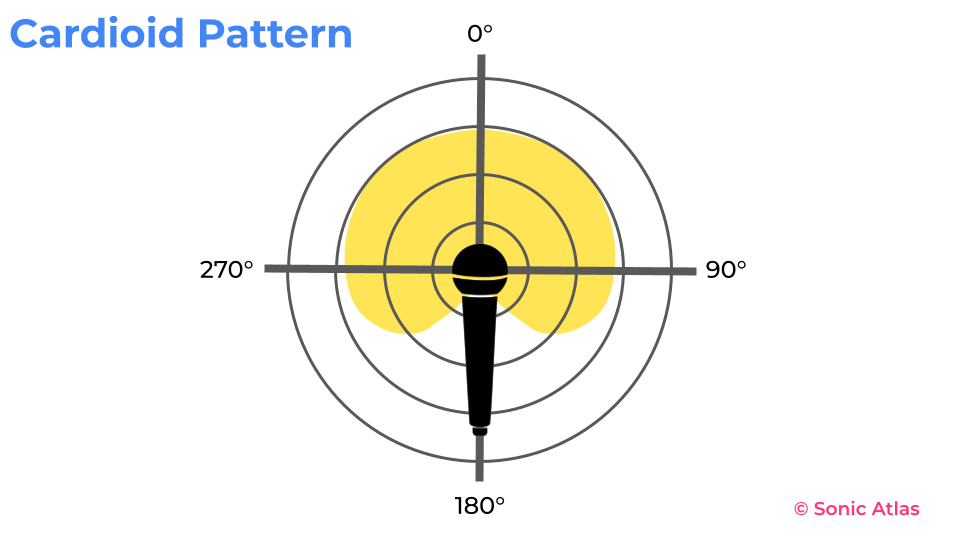Many people buy the Blue Yeti with the promise of clean, studio-quality vocals. But try as you might, you can’t get the professional sound you were looking for when you first bought this microphone.
It’s frustrating.
But it’s not necessarily your fault. The Blue Yeti’s design makes it extremely prone to user error. Thankfully, there are some easy solutions to making it sound better.
(P.S. These tips work just as well for the Yeti X and Yeti Nano)
1. Make Sure You Speak Into the Front
One of the most common mistakes people make when using the Yeti is talking into the top.
Whatever you do, DO NOT speak into the top of the Blue Yeti.
Understandably, it looks like you should talk into the top just fine. But the Blue Yeti is a side-address microphone, meaning it picks up sound from the sides (duh).
When you use it, talk into the front side with the logo facing toward you. This ensures that it properly picks up your voice.

2. Only Use the Cardioid Polar Pattern
The four switchable pickup patterns are one of the Yeti’s biggest selling points. But I’m willing to bet that 99% of people using this microphone will never need them all.
If you’re a solo podcaster or streamer, you only need the cardioid pickup pattern. That’s the little heart-shaped icon.
The cardioid pattern makes it so the Yeti only picks up sound directly in front of it. That’ll clean up your audio and reduce the amount of room noise it receives.
The other three patterns pick up signals from different directions, making them more prone to background noise and room echo.
- For a better understanding of these pickup patterns, read our guide on microphone polar patterns.

3. Adjust the Gain
Gain is how loud an input signal is before it’s processed.
If the gain is too low, your audio signal will be really quiet. If it’s too high, your audio will start clipping and possibly hurt your listener’s ears.
The Yeti has a gain dial on the back. Do some tests with your normal speaking voice and adjust the gain until it’s at a good volume.
As a general rule, keep your levels somewhere between -10 and -6 db. If your audio software provides visual feedback, that usually means it mostly stays green while barely touching the yellow.
4. Get Closer to the Mic
The built-in desk stand makes the Yeti a really convenient plug-and-play microphone. But oftentimes, that means it sits really far away from the user.
Move it closer to you if possible.
Ideally, it should be about 6-12 inches away from your mouth. The same goes for any large-diaphragm condenser microphone.
If it’s too far away, your voice will be thin and echo-y. Get too close, and your voice will sound really boomy due to proximity effect.
5. Use a Pop Filter to Reduce Plosives
Plosives are those nasty puffs of air you hear when someone’s talking directly into a microphone. They’re usually caused by the letter P.
They’re really distracting and uncomfortable to hear.
Your Yeti will be more susceptible to plosives the closer you get to it. But a simple pop filter or windscreen can eliminate most of them. As a result, your audio will sound more polished and professional.
A super simple pop filter. It has a bendable arm and attaches to any microphone stand.
A super simple windscreen cover for Blue Yeti and Yeti Pro microphones. Helps reduce plosives.
5. Isolate the Mic From Your Desk
The Blue Yeti is really sensitive and easily picks up sound through the built-in desk stand.
That means two things:
- It’ll pick up every time you bump your hands and arms on your desk.
- It’s more likely to pick up sounds like mouse and keyboard clicking.
A boom arm might be the best solution for some people. It isolates the microphone from your desk and prevents it from picking up those noises. Plus, it helps save space on your desk.
Logitech and Blue have their own recommended Blue Compass boom arm. You can also try some other boom arms from different manufacturers.
A sturdy microphone boom arm that mounts to your desk. Use it with your Blue Yeti or any other broadcast microphone.
An affordable boom arm that mounts to your desk.
This professional boom arm helps you find the perfect position for your broadcast mic. It moves smoothly and quietly. Plus, it features built-in cable management for a clean setup.
7. Apply Sound Treatment To Your Room
As a condenser microphone, the Yeti is really sensitive to room noise. If you have a smaller room crammed with furniture and stuff all over the walls, it’ll sound just fine.
But if you’re in a big empty room, it’ll sound like a big empty room.
In other words, the Yeti will pick up every echo that bounces off the walls.
Some simple acoustic foam can do wonders for a room’s sound. And in all honesty, putting up decorations on the walls can go a long way too.
An affordable set of foam panels for sound absorption. Place them in any room to help dry out your audio recordings.
8. Reduce Background Noise
Like we mentioned, the Yeti is a condenser microphone. As such, it’s prone to picking up unwanted background noise.
Things like:
- Air conditioners
- Fans
- Washers & dryers
- Cars & motorcycles driving by your home
- Birds chirping outside the window
- Children crying outside your door
- Dogs barking
- Lawnmowers
- Whatever else
Do what you can to eliminate those sounds before recording.
Turn off any appliances that might make those sounds. And when necessary, choose the right time of day (or night) to do your recording.
Still Frustrated With the Yeti? Try One of These Alternatives Instead
Maybe the Blue Yeti just isn’t for you. Thankfully, there are other options out there.If you’re in the market for another microphone, try looking at one of these Blue Yeti alternatives.





